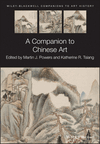Garden Art
Martin J. Powers
Search for more papers by this authorKatherine R. Tsiang
Search for more papers by this authorSummary
This chapter examines the evolution of gardens in China divided into five major historical periods. It first deals with the shift in the ontological significance of gardens from the Bronze Age to the Han period, followed by a discussion on the transformation of gardens as emblems of eremitism from the Six Dynasties period through the Tang dynasty (third through tenth centuries CE). Next, the chapter describes the development of the landscape garden from the Song period through the Ming dynasty (tenth through sixteenth centuries). Then, the formation of an independent art of garden and its demise under the pressure of conspicuous consumption from the late Ming to early Qing (seventeenth through mid-eighteenth centuries) is discussed. Finally, the impact of popular anxieties and dreams upon garden design and practices during the later Qing dynasty (nineteenth century) is examined.
References
- Clunas , C. ( 1996 ). Fruitful Sites: Garden Culture in Ming Dynasty China . Durham : Duke University Press .
- Conan , M. (ed.) ( 2007 ). Sacred Gardens and Landscapes: Ritual and Agency . Washington, DC : Dumbarton Oaks .
- Fu , L. F. ( 2009 ). Framing Famous Mountains: Grand Tour and Mingshan Paintings in Sixteenth-century China . Hong Kong : Chinese University Press .
- Guangzhou Xi Han Nanyue wang mu bowu guan ( 1991 ). Xi Han Nanyue wang mu . Beijing : Wenwu chuban she .
- Han , P. ( 1992 ). The Story of Chinese Landscape Design, trans . C. Shen. Taipei : Youth Cultural Enterprise .
- Hangzhou wenwu kaogu suo ( 2008 ). Nan Song Gongshengrenlie huanghou zhai yizhi . Beijing : Wenwu chuban .
- Hardie , A. ( 2015 ). Transformations of Garden Design in Late-Ming China . In Wu Xin (ed.), The Realm of Shanshui: Garden and Landscape in Chinese Culture . Beijing : Sanlian shu dian .
- Harrist , R. E. , Jr. ( 1996 ). Art and Identity in Northern Song Dynasty: Evidence from Gardens . In M. K. Hearn and J. G. Smith (eds.), Arts of the Sung and Yuan. New York : The Metropolitan Museum of Art , pp. 147–159 .
- Hu , K. ( 2002 ). Scholars' Rocks in Ancient China: The Suyuan Stone Catalogue . Trumbull, CT : Weatherhill .
- Jiang Bo ( 1998 ). Tang dong du Shangyang gong yuan lin ti zhi fa jue jian bao . Kaogu , 2 .
- Kuitert , W. ( 2002 ). Themes in the History of Japanese Garden Art . Honolulu : University of Hawaii Press .
- Liscomb , K. M. ( 1993 ) Learning from Mount Hua: A Chinese Physician's Illustrated Travel Record and Painting Theory . Cambridge : Cambridge University Press .
- Métailié , G. ( 2008 ). Gardens of Luoyang: The Refinement of a City Culture . In M. Conan and Chen Wangheng (eds.), Gardens, City Life and Culture. Washington DC : Dumbarton Oaks , pp. 31 – 41 .
- Murck , A. ( 1996 ). The Eight Views of Xiao-Xiang and the Northern Song Culture of Exile . Journal of Sung-Yuan Studies , 26 : 113 – 144 .
-
Murck , A.
(
2000
).
Poetry and Painting in Song China: The Subtle Art of Dissent.
Cambridge, MA
:
Harvard University Asia Center for the Harvard-Yenching Institute
.
10.2307/j.ctt1dnn9rx Google Scholar
- Pope , A. ( 1731 ). An Epistle to the Right Honourable Richard Earl of Burlington, Occasion'd by his Publishing Palladio's Designs of the Baths, Arches, Theatres, &c. of Ancient Rome . London : L. Gilliver .
- Stein , R. ( 1987 ). The World in Miniature: Container Gardens and Dwellings in Far Eastern Religious Thought, trans. 1990 Phyllis Brooks . Stanford, CA : Stanford University Press .
- Strassberg , R. ( 2008 ). Mirrors and Windows: Fictional Imagination in Later Chinese Garden Culture. In M. Conan (ed.), Gardens and Imagination: Cultural History and Agency . Washington DC : Dumbarton Oaks , pp. 191 – 205 .
- Tong Jun ( 1984 ). Jiangnan yuanlin kao , 2nd edn. Beijing : Zhongguo jianzhu gongye chuban she .
- Wang Yi ( 1995 ). Yuan lin yu Zhongguo wen hua . Shanghai : Shanghai renmin chuban .
- Wu Hung ( 1997 ). The Double Screen: Medium and Representation in Chinese Painting . Chicago : University of Chicago Press .
- Wu , X. ( 2005 ). Landscapes and Gardens of Neo-Confucian Pedagogy at Yuelu Academy . Studies in the History of Gardens & Designed Landscapes , 25 ( 3 ): 156 – 190 .
- Yang , X. ( 2003 ). Metamorphosis of the Private Sphere: Gardens and Objects in Tang-Song Poetry . Cambridge, MA : Harvard University Asian Center .
- Zhou Weiquan ( 1999 ). Zhongguo gudian yuanlin , 2nd ed. Beijing : Ts'inghua University Press .



